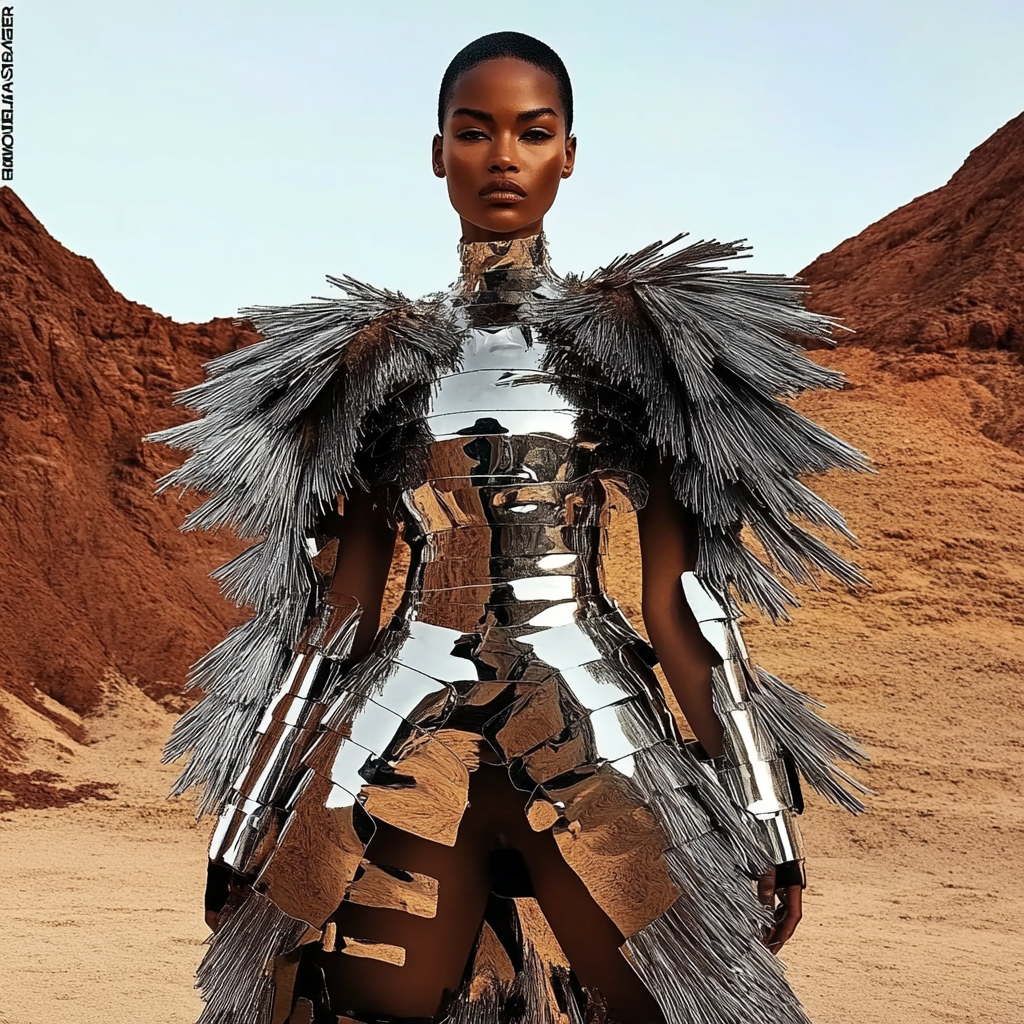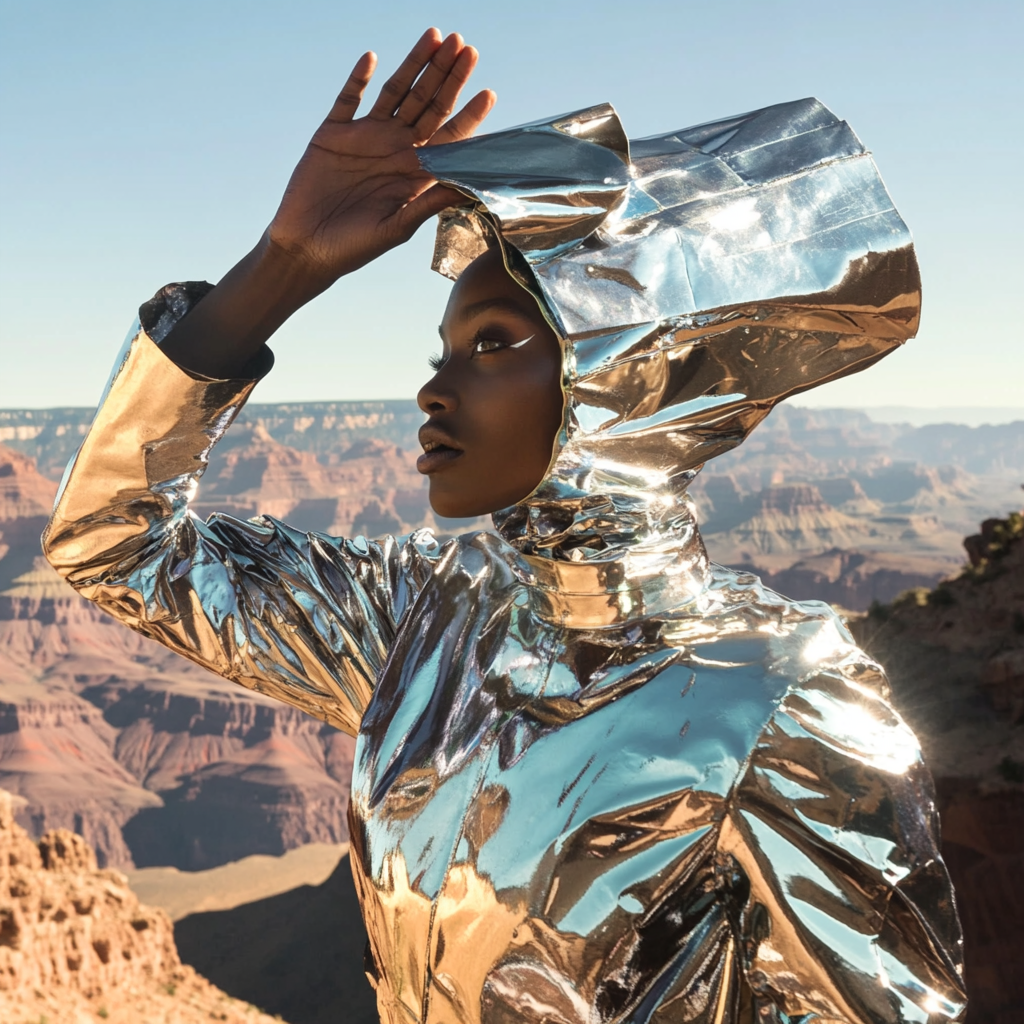Is Frank Wolfe IV Leading the Merge of Artificial Intelligence and Fashion?
In a dazzling collision of imagination and technology, Frank Wolfe has redefined the boundaries of art, nature, and fashion with his groundbreaking AI-driven fashion show, Somewhere in Space Australia. Set against the monumental grandeur of the Grand Canyon, Wolfe transforms the iconic American landscape into an otherworldly spectacle, convincing viewers they’ve been transported to an alien realm.
The stage—dappled with the interplay of AI-rendered cosmic hues and canyon shadows—came alive with models wearing garments that seemed to defy physics. Draped in ethereal fabrics and interstellar textures, the pieces mirrored the uncharted terrains of a faraway planet. From gowns that shimmered like starry skies to cloaks that pulsed with simulated bioluminescence, every design felt like a tribute to the surreal and sublime.
What sets this fashion show apart isn’t just its spectacular visuals or its clever use of AI-generated environments. It’s the seamless integration of artificial intelligence into the creative process itself. Wolfe employed cutting-edge generative AI models not only to design the garments but also to choreograph movements, create atmospheric soundscapes, and even simulate weather patterns to enhance the ethereal effect. Every detail reflected his vision, brought to life with the precision and artistry only AI could offer.
While Wolfe’s achievement deserves all the praise it garners—he is, after all, pushing fashion to venture boldly where no couture has gone before—it also raises profound questions about the future of the industry. Will AI supersede human creativity? Could fashion design, an art form historically driven by individuality and intuition, become dominated by algorithms and machine learning? Will the tactile magic of hand-sewn details and the spontaneity of human-led innovation be replaced by data-driven perfection?
scene from, “somewhere in space austrailia”
As Wolfe’s show demonstrates, AI can serve as an incredible tool for creative exploration. But at its core, fashion is about storytelling—about weaving narratives through fabric, silhouette, and form. Can a machine truly grasp the emotional depth and cultural nuances that make fashion so much more than clothing?
This is where you come in. As a viewer, a consumer, or simply an admirer of artistry, what do you think? Is the future of fashion destined to be a digital collaboration between humans and machines, or should we tread carefully, ensuring technology complements rather than replaces the heart and soul of design? Let us know your thoughts—because, in the ever-evolving story of fashion, your perspective is a key thread.
Frank Wolfe’s Somewhere in Space Australia is more than a fashion show; it’s a conversation starter. One that urges us to imagine a future where technology and creativity coexist—and to question where we, as humans, fit into that vision.
“As we celebrate Wolfe’s visionary approach, it’s impossible to ignore the broader implications of AI in the fashion industry. In 2025, AI is not just a tool for innovation—it’s a driving force behind significant changes in how fashion is created, marketed, and consumed. Here are some key trends shaping the industry this year”
AI-Driven Design and Creativity: Designers are increasingly collaborating with AI to push the boundaries of creativity. AI tools assist in generating unique prints, fabrics, and even entire collections, allowing designers to explore new materials and processes while maintaining their artistic vision2.
Sustainability Through AI: With the fashion industry producing billions of pounds of textile waste annually, AI is stepping in to optimize supply chains and reduce overproduction. Predictive analytics help brands forecast demand more accurately, ensuring that only the most desired items go into production2.
Personalized Shopping Experiences: AI algorithms analyze customer data to offer tailored recommendations, creating a more engaging and satisfying shopping experience. Virtual fitting rooms and AI-powered styling tools are becoming standard features, making online shopping more interactive and reducing return rates3.
Virtual Photoshoots and Marketing: Brands are leveraging AI to conduct virtual photoshoots, mapping garments onto models digitally. This not only saves time and resources but also allows for innovative marketing strategies that resonate with tech-savvy audiences.
Trend Forecasting: AI is revolutionizing trend forecasting by analyzing social media, sales data, and search trends. This data-driven approach enables brands to stay ahead of consumer preferences and adapt quickly to changing demands
In 2025, AI continues to be a transformative force in the fashion industry, offering both opportunities and challenges. On one hand, AI has become an indispensable tool for enhancing efficiency and sustainability. By leveraging predictive analytics, brands can better forecast trends and consumer demands, reducing overproduction and minimizing waste. AI-powered tools are also enabling the creation of virtual garments and digital fashion collections, which cater to the growing demand for sustainable and customizable options. These advancements not only streamline production processes but also align with the industry's push toward a circular economy, where resources are reused and waste is minimized.
However, the integration of AI into fashion also raises concerns about the potential loss of human creativity and craftsmanship. While AI excels at analyzing data and generating designs based on patterns and trends, it lacks the emotional depth and cultural understanding that human designers bring to their work. There is also the question of accessibility, as smaller brands and independent designers may struggle to compete with larger companies that have the resources to invest in advanced AI technologies. As the industry moves forward, finding a balance between embracing AI's capabilities and preserving the human touch will be crucial to ensuring that fashion remains an art form as much as it is a business.
As we look ahead to the future of fashion, it’s clear that artificial intelligence is poised to play an increasingly integral role. From reimagining design processes to addressing pressing environmental challenges, AI has the power to revolutionize the industry in ways we could scarcely imagine just a few years ago. Yet, amid these advancements, the essence of fashion as an art form—its ability to tell stories, evoke emotions, and connect cultures—remains deeply rooted in human creativity. The key to moving forward lies in striking a harmonious balance between embracing AI’s capabilities and preserving the irreplaceable contributions of human ingenuity.
Frank Wolfe IV’s Somewhere in Space Australia exemplifies this potential synergy, showcasing how AI can elevate the creative vision of a designer to uncharted heights. But the future of fashion is not solely in the hands of technology; it’s shaped by our collective choices and perspectives as individuals within the industry and as consumers. Will AI become a collaborator or a competitor in this ever-evolving landscape? The answer depends on how we choose to integrate these innovations into the heart and soul of fashion.
Your voice matters in this conversation—share your thoughts and let us know: what role should AI play in shaping the future of fashion? Together, we can envision a future that honors creativity, embraces innovation, and preserves the humanity at the core of this timeless art form.















